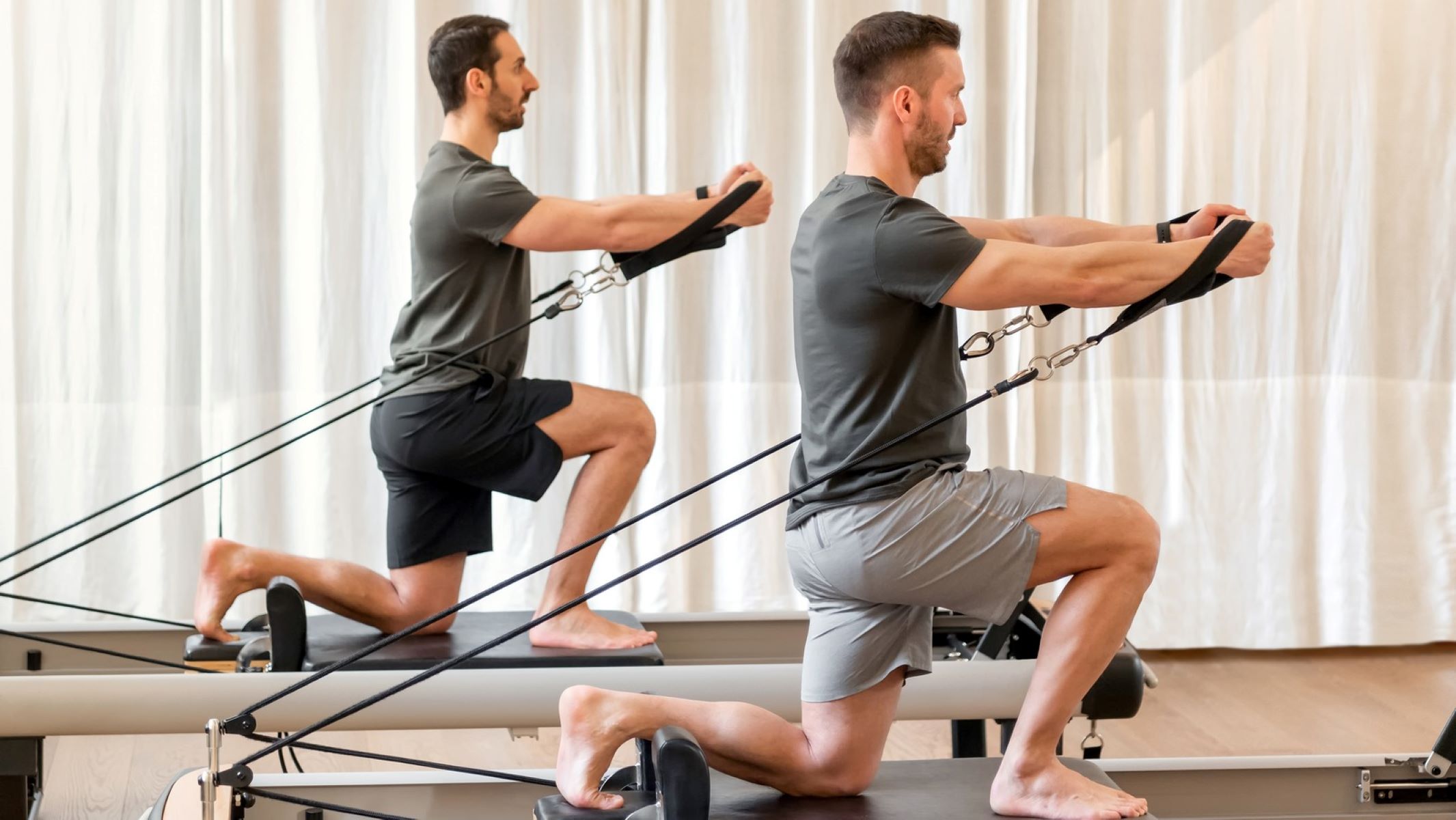

Featured
What Exercise Is Good For Back Pain
Published: September 29, 2023
Featured: Discover the best exercises for relieving back pain and improving your overall spine health. Find effective strategies to strengthen your back and reduce discomfort.
Introduction
Welcome to our comprehensive guide on what exercise is good for back pain. If you’re someone who suffers from back pain, you know how debilitating it can be. The constant ache, limited mobility, and overall discomfort can make it challenging to carry out even the simplest of daily tasks.
Fortunately, there is hope! Exercise has been proven to be an effective tool in managing and alleviating back pain. The right exercises can help strengthen the muscles that support your spine, improve flexibility, and promote overall spine health. Whether you’re dealing with chronic back pain or occasional discomfort, incorporating the right types of exercise into your routine can make a significant difference in your quality of life.
In this guide, we will explore the various causes of back pain, the importance of exercise for back pain relief, and the types of exercises that are known to be beneficial. We’ll delve into stretching exercises that can help improve flexibility and relieve tension in your back muscles. We’ll also discuss strengthening exercises that target the core muscles, which play a crucial role in supporting your spine. Additionally, we’ll explore low-impact aerobic exercises, such as swimming or cycling, and how they can be beneficial for individuals with back pain. Lastly, we’ll touch on the benefits of incorporating practices like yoga and Pilates into your routine to help alleviate back pain.
Before we dive into the specific types of exercises, it’s important to understand the underlying causes of back pain. Identifying the root cause of your discomfort can help tailor your exercise routine to provide maximum relief. So, let’s explore some common sources of back pain and how exercise can help alleviate them.
Understanding Back Pain
Back pain is a prevalent condition that affects millions of people worldwide. It can range from mild discomfort to chronic, debilitating pain that significantly impacts daily life. To effectively manage and treat back pain, it’s crucial to understand its different aspects.
Back pain can be categorized into two main types: acute and chronic. Acute back pain is typically short-term and often results from a sudden injury or strain on the back muscles or ligaments. On the other hand, chronic back pain persists for longer than three months and can be caused by underlying conditions such as herniated discs, arthritis, or spinal stenosis.
Regardless of the type, back pain can have a significant impact on a person’s quality of life. It can limit mobility, interfere with work, and hinder participation in enjoyable activities. Understanding the causes of back pain is crucial for implementing the right treatment approach.
The back is a complex structure composed of bones, muscles, ligaments, and discs. The spine, consisting of vertebrae stacked on top of each other, serves as the backbone of the entire structure. Any disruption or injury to these components can lead to back pain.
Common causes of back pain include:
- Muscle strains or sprains
- Herniated or bulging discs
- Degenerative conditions, such as arthritis
- Poor posture and lack of core strength
- Spinal abnormalities, such as scoliosis
- Accidents or traumatic injuries
It’s important to note that while many cases of back pain can be attributed to specific causes, there are instances where the exact cause remains unknown. However, irrespective of the cause, engaging in regular exercise can play a significant role in managing and reducing back pain.
Now that we have a better understanding of back pain and its causes, let’s explore why exercise is so crucial in providing relief for individuals experiencing back pain.
Causes of Back Pain
Back pain can have various causes, and understanding these causes is essential in effectively managing and treating the condition. Identifying the underlying cause can help tailor the treatment approach and prevent further discomfort. Let’s explore some common causes of back pain:
- Poor Posture: Maintaining poor posture can put strain on the muscles and ligaments of the back, leading to discomfort and pain. Prolonged sitting or standing with incorrect alignment can contribute to posture-related back pain.
- Muscle Strain and Sprain: Overexertion or sudden movements that put excessive stress on the back can result in strains or sprains. Lifting heavy objects improperly, sudden twisting motions, or engaging in activities that involve repetitive bending can lead to muscle strains or sprains.
- Herniated or Bulging Discs: Intervertebral discs act as cushions between the vertebrae of the spine. When these discs become herniated or bulge out of their normal position, they can press against nerves, causing pain and discomfort.
- Degenerative Conditions: Conditions such as osteoarthritis, rheumatoid arthritis, and spinal stenosis can lead to back pain. These conditions result from the natural wear and tear of the spine, causing the joints and discs to deteriorate over time.
- Structural Abnormalities: Certain structural abnormalities of the spine, such as scoliosis (abnormal curvature of the spine) or kyphosis (excessive curvature of the upper back), can contribute to back pain. These abnormalities can put strain on the muscles and cause imbalances in the spine.
- Injury or Trauma: Accidents, falls, or other traumatic events can cause back pain. Fractures, dislocations, or sprains resulting from such incidents can lead to acute or chronic back pain.
It’s important to note that these are just some of the common causes of back pain, and individual cases may vary. Consulting with a healthcare professional to accurately diagnose the cause of back pain is crucial in determining the most appropriate treatment plan. In many cases, a combination of treatment modalities, including exercise, is recommended for effective pain management.
Now that we have an understanding of the causes of back pain, let’s explore why exercise is a vital component of managing and alleviating back pain.
Importance of Exercise for Back Pain
When it comes to managing and alleviating back pain, exercise plays a crucial role. Engaging in regular physical activity not only helps relieve pain but also improves overall spine health and enhances the body’s ability to cope with future episodes of discomfort. Here are some key reasons why exercise is important for back pain relief:
- Strengthening the Back Muscles: Back pain often occurs due to weak or imbalanced muscles that support the spine. Exercise, particularly targeted strength training exercises, can help strengthen the muscles in the back, abdomen, and hips, improving overall spinal stability and reducing the risk of future injuries.
- Improving Flexibility: Maintaining adequate flexibility is essential for a healthy, pain-free back. Lack of flexibility can restrict movement and place additional strain on the back muscles. Stretching exercises can help improve flexibility, reduce muscle tension, and alleviate back pain.
- Enhancing Blood Flow and Nutrient Delivery: Regular exercise increases blood flow to the spine, delivering essential nutrients and oxygen to the structures in the back. This helps promote healing, reduce inflammation, and alleviate pain.
- Promoting Weight Management: Excess weight places added stress on the spine, increasing the risk of back pain. Engaging in regular exercise helps manage weight and reduce the burden on the back, reducing the likelihood of pain and discomfort.
- Encouraging Endorphin Release: Exercise triggers the release of endorphins, which are natural pain-reducing chemicals in the body. This can help improve mood, reduce stress, and provide a natural pain relief mechanism for individuals experiencing back pain.
- Preventing Future Episodes: Regular exercise strengthens the core and back muscles, improves flexibility, and promotes proper posture, all of which contribute to a reduced risk of future back pain episodes. By adopting an exercise routine, individuals can mitigate the likelihood of recurring pain and enjoy a higher quality of life.
It’s important to note that while exercise is beneficial for managing back pain, it’s crucial to consult with a healthcare professional or a physical therapist before starting any exercise program. They can provide guidance on the most appropriate exercises and ensure they are performed safely and effectively.
Now that we understand the importance of exercise for back pain relief, let’s explore the different types of exercises that can help alleviate discomfort and improve spine health.
Types of Exercise for Back Pain Relief
When it comes to relieving back pain, incorporating the right types of exercises into your routine is essential. While each individual’s needs may vary, there are several categories of exercises that have been proven effective in alleviating back pain. Let’s explore these different types:
- Stretching Exercises: Stretching exercises focus on improving flexibility, relieving muscle tension, and increasing range of motion. Common stretching exercises for back pain include hamstring stretches, piriformis stretches, and lower back stretches. These exercises help elongate and relax the back muscles, reducing stiffness and discomfort.
- Strengthening Exercises: Strengthening exercises target the muscles that support and stabilize the spine, particularly the core muscles. Exercises such as planks, bridges, and bird-dogs can help strengthen the abdominal, back, and hip muscles, providing better support for the spine and reducing strain on the back.
- Low-Impact Aerobic Exercises: Low-impact aerobic exercises, such as swimming, cycling, or walking, are beneficial for individuals with back pain. These exercises provide cardiovascular benefits without putting excessive stress on the spine. They improve overall fitness, help with weight management, and promote better circulation and nutrient delivery to the back structures.
- Yoga and Pilates: Yoga and Pilates are mind-body exercises that combine stretching, strength-building, and relaxation techniques. These practices focus on improving posture, increasing flexibility, and promoting core strength. Specific poses and exercises are designed to alleviate back pain, enhance spine alignment, and release muscle tension.
- Physical Therapy: Physical therapy is often recommended for individuals with chronic or severe back pain. It involves a combination of exercises, manual therapy techniques, and specialized treatments tailored to the individual’s needs. Physical therapists can help identify movement patterns and muscle imbalances, prescribe appropriate exercises, and guide individuals in proper form and technique to promote healing and pain relief.
It’s important to remember that not all exercises may be suitable for everyone, as individual needs and conditions vary. Consulting with a healthcare professional or a physical therapist is crucial in determining the most appropriate exercises for your specific situation.
In the next sections, we will delve deeper into each category and provide specific examples of stretching exercises, strengthening exercises, low-impact aerobic exercises, and yoga/pilates exercises that can help alleviate back pain.
Stretching Exercises for Back Pain
Stretching exercises are an integral part of any back pain relief routine. They help improve flexibility, relieve muscle tension, and increase the range of motion in the back. Stretching can alleviate stiffness, reduce discomfort, and improve overall spine health. Here are some effective stretching exercises for back pain:
- Hamstring Stretch: Sit on the floor with your legs extended in front of you. Slowly reach forward and try to touch your toes. Hold this position for 20-30 seconds, feeling a gentle stretch in the back of your thighs. Repeat this stretch 2-3 times.
- Piriformis Stretch: Lie on your back with both knees bent. Cross one ankle over the opposite knee, then reach behind the thigh of the bent leg and gently pull it towards your chest until you feel a stretch in your buttock and hip area. Hold for 20-30 seconds then switch sides. Repeat 2-3 times per side.
- Child’s Pose: Start on all fours, then slowly sit back onto your heels while extending your arms forward. Rest your forehead on the mat or the floor. Feel a gentle stretch in your lower back and shoulders. Hold this position for 20-30 seconds while taking deep breaths.
- Spinal Twist: Lie on your back with your knees bent. Extend your arms out to the sides at shoulder level. Slowly drop your knees to one side, keeping your shoulder blades in contact with the floor. Hold for 20-30 seconds, then return to the starting position and repeat on the other side. This stretch helps release tension in the lower back.
- Cat-Camel Stretch: Position yourself on all fours with your hands directly under your shoulders and your knees hip-width apart. Slowly round your back, tucking your chin towards your chest (cat pose). Then, arch your back, lifting your head and tailbone towards the ceiling (camel pose). Repeat this sequence 10-15 times, gently moving through each position.
Remember to perform these stretching exercises in a slow and controlled manner, without bouncing or jerking movements. Start with gentle stretches and gradually increase the intensity over time. If any stretch feels painful or uncomfortable, ease off or modify the position accordingly.
Stretching exercises should be incorporated into your daily routine and performed regularly to maintain flexibility and prevent muscle tightness in the back. Consult with a healthcare professional or a physical therapist to ensure you are performing the right stretches for your specific condition.
In the next section, we will discuss strengthening exercises that target the muscles supporting the spine, which can help provide long-term back pain relief.
Strengthening Exercises for Back Pain
Strengthening exercises are essential for individuals experiencing back pain. These exercises target the muscles that support the spine, improving stability and reducing the risk of future injuries. By building strength in the back and core muscles, individuals can alleviate pain and enhance overall spine health. Incorporating the following strengthening exercises into your routine can provide long-term relief for back pain:
- Bird-Dog: Start on all fours, with your hands beneath your shoulders and knees beneath your hips. Slowly extend one arm forward while lifting the opposite leg straight back, maintaining a neutral spine. Hold this position for a few seconds before returning to the starting position. Repeat on the other side. Perform 10 repetitions on each side.
- Superman: Lie face down on the floor with your arms extended straight in front of you. Contract your glutes and lower back muscles to lift your arms, chest, and legs off the ground. Hold this position for a few seconds before lowering back down. Repeat 10-15 times.
- Bridge: Lie on your back with your knees bent and feet flat on the floor, hip-width apart. Slowly lift your hips off the ground, engaging your glutes and core muscles. Hold the bridge position for a few seconds before lowering back down. Repeat 10-15 times.
- Side Plank: Lie on your side with your elbow directly beneath your shoulder and your legs extended. Engage your core and lift your hips off the ground, creating a straight line from your head to your feet. Hold this position for as long as you can maintain proper form, aiming for 30 seconds to 1 minute. Repeat on the other side.
- Deadlifts: Stand with your feet hip-width apart and a slight bend in your knees. Hold a dumbbell or kettlebell in each hand in front of your thighs. Hinge forward at the hips, keeping your back straight, until the weights reach mid-shin level. Then, engage your glutes and hamstrings to return to the standing position. Repeat for 10-12 repetitions.
It’s important to start with lighter weights or no weights at all for these exercises and gradually increase the resistance as your strength improves. Focus on maintaining proper form and technique throughout each exercise to avoid strain or injury.
In addition to these specific exercises, incorporating activities such as swimming, hiking, or cycling into your routine can also help strengthen the back and core muscles. Remember to consult with a healthcare professional or a physical therapist to ensure that you are performing the right exercises for your specific condition and to receive guidance on proper form and progression.
In the next section, we will discuss low-impact aerobic exercises that can help individuals experiencing back pain strengthen their cardiovascular system without putting excessive stress on the spine.
Low-Impact Aerobic Exercises for Back Pain
Engaging in regular aerobic exercise is important for overall health and well-being, especially for individuals with back pain. Low-impact aerobic exercises provide cardiovascular benefits without putting excessive stress on the spine. These exercises not only strengthen the cardiovascular system but also help manage weight, improve mood, and promote better circulation throughout the body. Here are some low-impact aerobic exercises that are beneficial for individuals experiencing back pain:
- Swimming: Swimming is an excellent low-impact exercise that provides a full-body workout. The buoyancy of the water reduces the impact on the joints and spine while allowing for a wide range of motion. Swimming improves cardiovascular fitness, strengthens muscles, and promotes flexibility.
- Cycling: Cycling, whether on a stationary bike or outdoors, is a great low-impact exercise option for individuals with back pain. It helps improve cardiovascular endurance, strengthens the leg muscles, and promotes better spine alignment. Start with shorter durations and gradually increase the intensity and duration of your cycling sessions.
- Walking: Walking is a simple yet effective low-impact exercise that can be easily incorporated into your daily routine. It improves cardiovascular fitness, strengthens the leg muscles, and supports overall spine health. Aim for at least 30 minutes of brisk walking most days of the week.
- Elliptical Training: Using an elliptical machine provides a low-impact, full-body workout. This exercise minimizes stress on the joints and allows for a smooth, fluid motion. Elliptical training improves cardiovascular fitness, strengthens the lower body, and engages the core muscles for better postural support.
- Water Aerobics: Water aerobics classes or exercises in a pool provide a low-impact workout that is gentle on the joints and spine. The water’s buoyancy helps support the body, reducing the risk of strain or injury. Water aerobics improves cardiovascular endurance, enhances flexibility, and strengthens the muscles.
When engaging in low-impact aerobic exercises, it’s important to listen to your body and choose activities that you enjoy and can sustain. Gradually increase the duration and intensity of your workouts as your fitness level improves. Remember to start with shorter sessions and gradually build up to longer workouts.
As always, it’s essential to consult with a healthcare professional or a physical therapist before starting any new exercise program, especially if you have existing back pain or any underlying conditions. They can provide guidance on the most suitable exercises and help tailor a safe and effective workout plan to meet your specific needs.
In the next section, we will explore the benefits of incorporating yoga and Pilates exercises into your routine for back pain relief.
Yoga and Pilates for Back Pain
Yoga and Pilates are two popular exercise modalities that can provide significant relief for individuals suffering from back pain. These practices emphasize mind-body connection, proper alignment, and controlled movements to enhance flexibility, strength, and overall spine health. Let’s explore the benefits of incorporating yoga and Pilates exercises into your routine to alleviate back pain:
Yoga:
Yoga combines physical postures, breathing techniques, and meditation to promote physical and mental well-being. It focuses on improving flexibility, strength, and balance while cultivating relaxation and mindfulness. Specific yoga poses and sequences can help alleviate back pain by stretching and strengthening the back muscles, improving posture, and relieving muscle tension. Some beneficial yoga poses for back pain include:
- Downward Facing Dog
- Cat-Cow Pose
- Child’s Pose
- Bridge Pose
- Corpse Pose
It’s important to approach yoga with awareness and listen to your body’s limits. Modify poses as needed and avoid overstretching or forcing yourself into uncomfortable positions. Joining a yoga class specifically designed for individuals with back pain or seeking guidance from a qualified yoga instructor can help ensure proper form and technique.
Pilates:
Pilates is a low-impact exercise system that focuses on core strength, stability, and postural alignment. It incorporates controlled movements, precise muscle engagement, and breath awareness to develop a balanced body. Pilates exercises target the core muscles, back muscles, and pelvic stabilizers, which are crucial for supporting the spine and maintaining healthy posture. Some beneficial Pilates exercises for back pain include:
- Pelvic Curl
- Plank
- Swan
- Side Kick Series
- Bridging with a Ball
As with any exercise, proper form and technique are essential in Pilates. Working with a qualified Pilates instructor or joining a Pilates class that caters to individuals with back pain can ensure that you perform the exercises correctly and safely.
Both yoga and Pilates offer numerous benefits for individuals with back pain, including increased flexibility, improved core strength, better posture, and reduced muscle tension. However, it’s important to consult with a healthcare professional or a physical therapist to determine the most appropriate exercises and modifications for your specific condition.
In the next section, we will provide some essential tips for exercising safely and avoiding exacerbation of back pain.
Tips for Exercising Safely with Back Pain
When exercising with back pain, it’s crucial to prioritize safety to prevent further injury and exacerbation of your condition. Here are some essential tips to keep in mind when exercising with back pain:
- Consult a Healthcare Professional: Before starting any exercise program, consult with a healthcare professional or a physical therapist. They can assess your condition, provide personalized guidance, and recommend exercises that are safe and suitable for your specific needs.
- Start Gradually: Begin with gentle exercises and gradually increase the intensity and duration over time. Avoid jumping into vigorous workouts or high-impact activities, as these can strain the back muscles and exacerbate pain.
- Listen to Your Body: Pay attention to your body’s signals and do not push through sharp or worsening pain. If an exercise causes discomfort, modify the movement, or stop if necessary. Your goal should be to challenge yourself within a pain-free range of motion.
- Warm-Up and Cool Down: Prior to exercising, warm up with gentle movements such as walking or light stretching. After your workout, cool down with additional stretching to reduce muscle soreness and stiffness.
- Practice Good Form: Focus on maintaining proper form and technique during exercises. Improper form can place additional stress on the back and lead to injury. If needed, seek guidance from a qualified instructor to ensure correct alignment.
- Modify the Exercises: Modify exercises as needed to accommodate your pain levels and limitations. Use props or modify movements to reduce strain on the back. For example, performing exercises on a mat or using a supportive cushion can help alleviate discomfort.
- Incorporate Core Strengthening: Strong core muscles provide support and stability for the spine. Incorporate exercises that target the abdominal and back muscles to enhance core strength and improve posture.
- Listen to Your Spine: If an exercise exacerbates your back pain or causes new pain, stop immediately and consult with your healthcare professional. Certain exercises may not be suitable for your specific condition, and it’s important to respect your body’s limitations.
- Stay Consistent: Regular exercise is key to managing back pain, but consistency is equally important. Aim for a balanced exercise routine that includes a variety of exercises, and make it a habit to exercise on most days of the week.
- Stay Hydrated: Drink plenty of water before, during, and after your workout to stay hydrated. Proper hydration supports overall bodily function and can help minimize muscle soreness.
Remember, everyone’s experience with back pain is unique, and what works for one person may not work for another. It’s essential to listen to your body, work with healthcare professionals, and make adjustments as necessary. By prioritizing safety and choosing exercises that are suitable for your condition, you can effectively manage back pain and improve your overall quality of life.
In the final section, we will provide a brief summary of the key takeaways from this guide.
Conclusion
Back pain can be a challenging and debilitating condition, but incorporating the right types of exercise into your routine can make a significant difference in managing and alleviating the discomfort. We have explored various aspects of back pain, including its causes, the importance of exercise, and different types of exercises for relief. Here are the key takeaways:
Understanding the causes of back pain is crucial in tailoring an effective treatment approach. Factors such as poor posture, muscle strains, herniated discs, degenerative conditions, structural abnormalities, and injury can contribute to back pain.
Exercise plays a vital role in relieving back pain by strengthening the muscles, improving flexibility, promoting weight management, enhancing blood flow, and releasing natural pain-relieving chemicals in the body.
Stretching exercises help improve flexibility, relieve muscle tension, and reduce stiffness. Strengthening exercises target the core and back muscles, enhancing stability and support for the spine. Low-impact aerobic exercises provide cardiovascular benefits without placing excessive stress on the spine. Yoga and Pilates exercises focus on mind-body connection, proper alignment, and controlled movements to promote flexibility, strength, and relaxation.
When exercising with back pain, it’s important to exercise caution and follow safety guidelines. Consult with a healthcare professional or a physical therapist, start gradually, listen to your body, practice good form, and modify exercises as needed. Consistency and proper hydration are also essential.
Remember, what works for one person may not work for another, so it’s important to find the exercises that suit your specific needs and limitations. Additionally, always seek professional guidance and adapt your exercise routine accordingly.
By incorporating the right exercises into your routine, you can strengthen the muscles supporting the spine, improve flexibility, manage weight, enhance overall spine health, and ultimately find relief from back pain. So, take the first step, consult with a healthcare professional, and start incorporating exercise into your journey towards a pain-free and active life.









